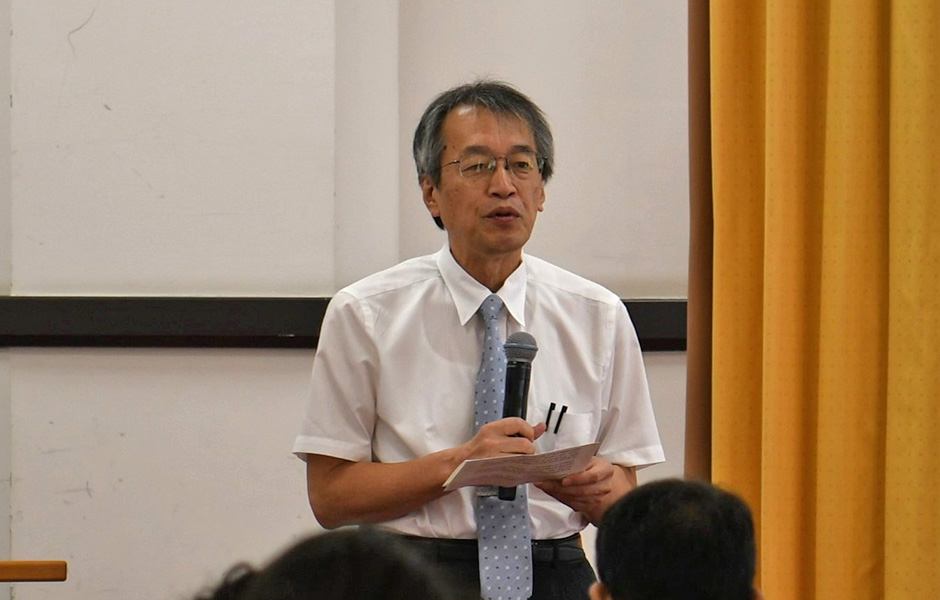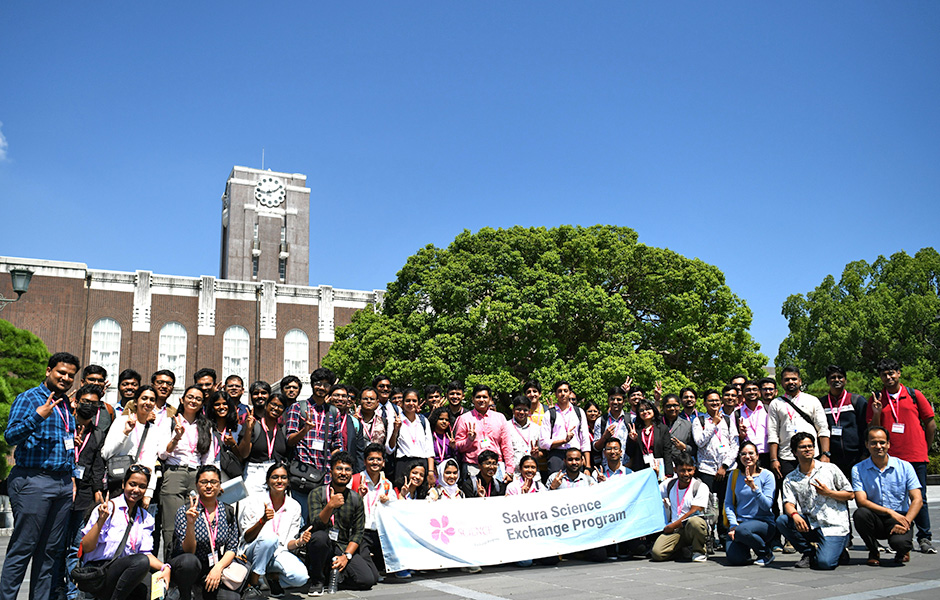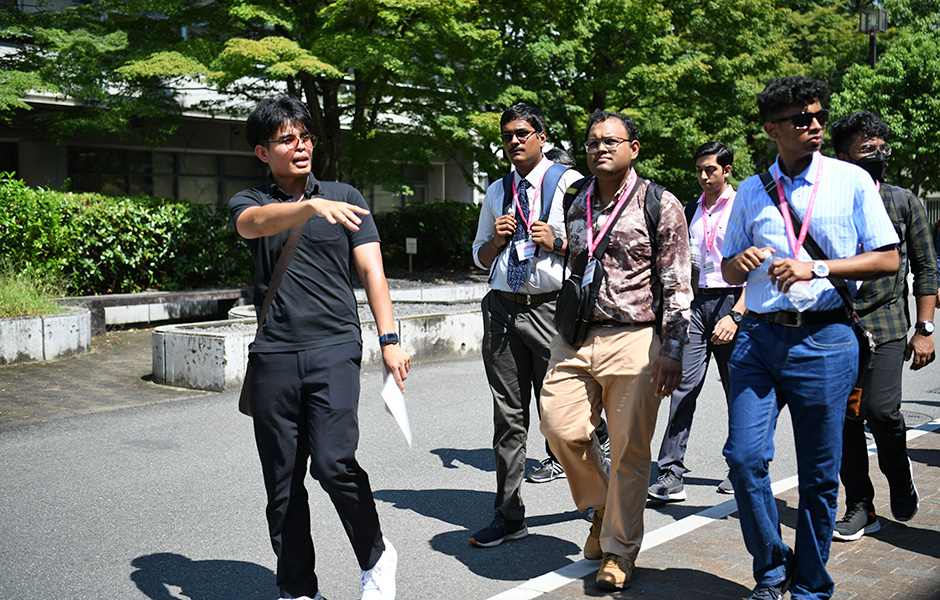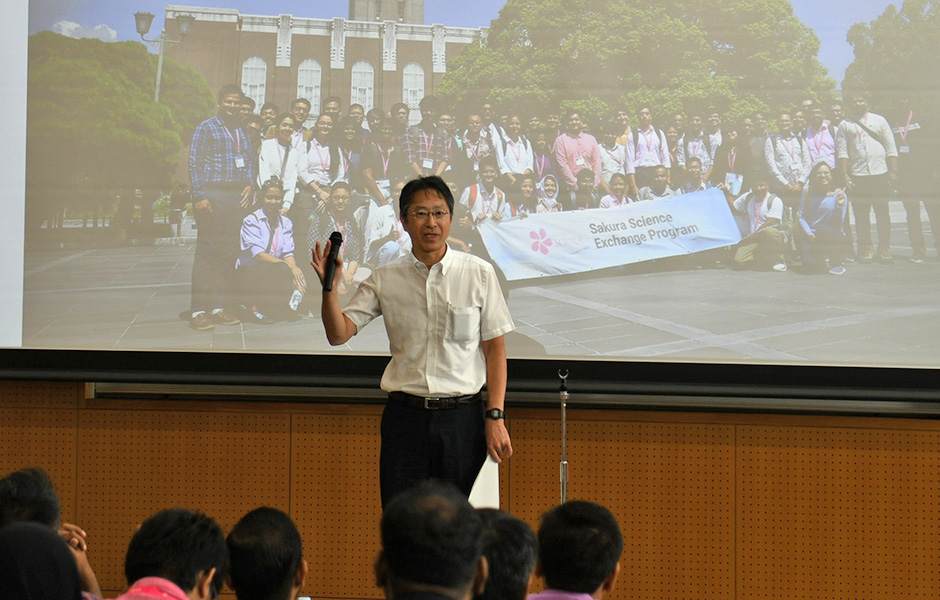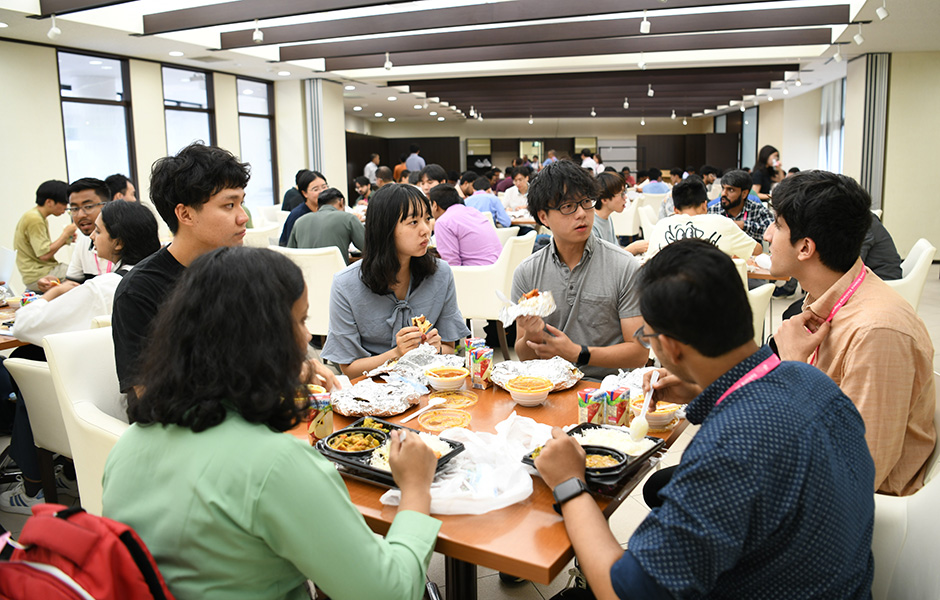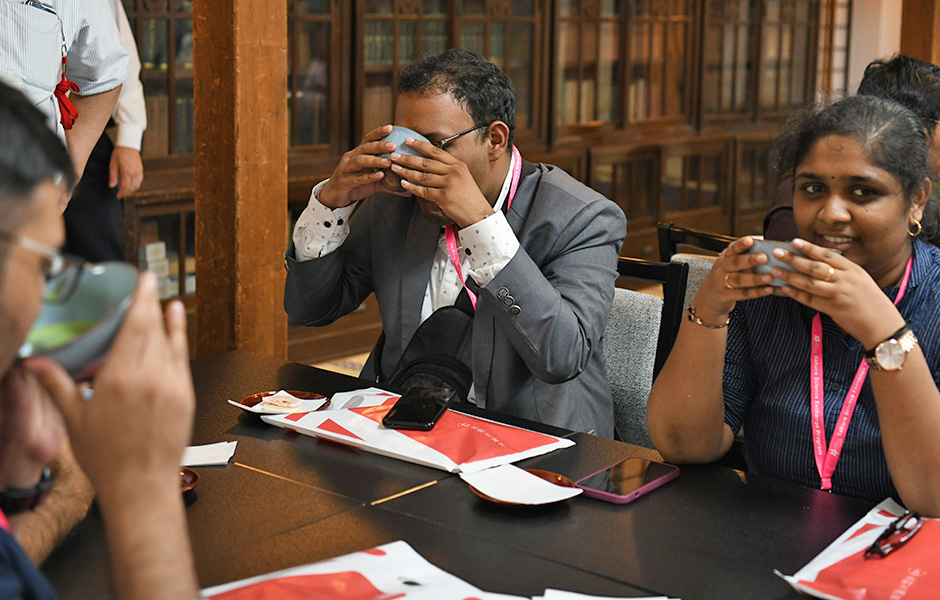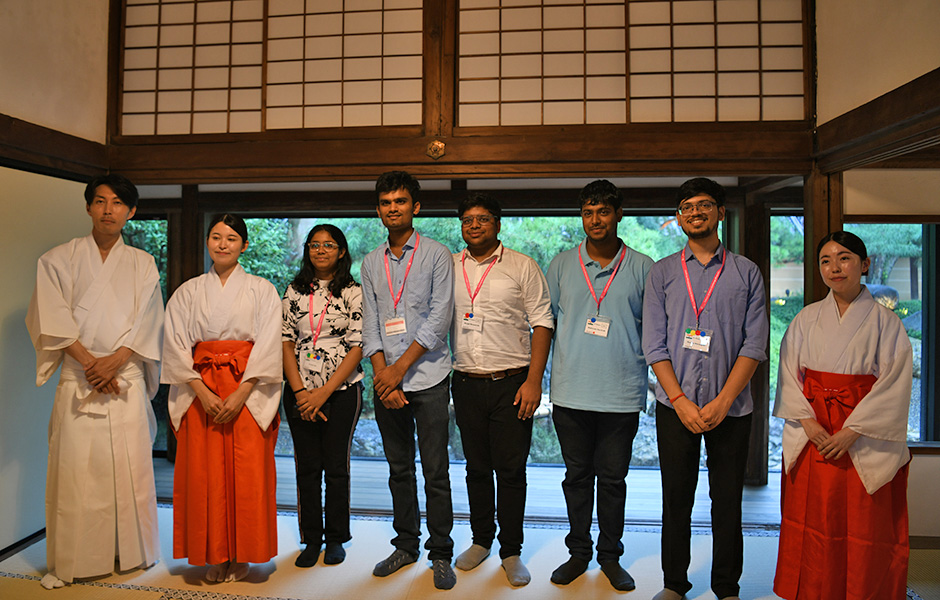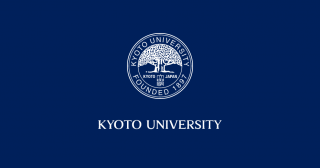From 9 to 10 September 2024, Kyoto University hosted 55 students from 10 leading Indian universities, including the Indian Institutes of Technology (IITs), as part of the Sakura Science India University Program. The program is run by the National Science and Technology Agency (JST) with the aim of strengthening ties between India and Japan in the fields of science and technology.
The first day began with welcome remarks from Dr Hiroshi Kokubu, executive vice-president for education, student affairs, and admissions, and Dr Takao Hirajima, director of the Division of Graduate Studies. These were followed by overviews of Kyoto University and its scholarship program, short-term research internship, postdoctoral fellowships, and India Desk. Participants then listened to presentations by one researcher and two students from India on their experiences of working and studying at Kyoto University, before going on a campus tour. In the afternoon, each student visited the Center for iPS Cell Research and Application (CiRA) and one of eight laboratories across the Graduate School of Science, the Graduate School of Energy Sciences, the Graduate School of Biostudies, and the Kyoto University Institute for Advanced Study (KUIAS) to observe cutting-edge research in action.
The second day featured a visit to the Katsura Campus, where participants received greetings from the Graduate School of Engineering's Dean Yasuto Tachikawa and attended lectures by Junior Associate Professor Hiroyuki Inamasu and Associate Professor Takayuki Tanaka, also of the Graduate School of Engineering. The students then each toured one of six laboratories at the Graduate School, actively asking their hosts questions about their research. For lunch, participants had Indian curry with a group of KyotoU students in what proved to be a highly fruitful gathering for both sides.
The afternoon's highlight was a formal visit to Kitano Tenmangu's main shrine, arranged with the cooperation of the nonprofit Nippon Indo Cultural and Economic Center (NICE). The occasion included cultural activities such as watching a dedication dance performance by shrine maidens and experiencing a tea ceremony.
Many of the program participants later reported being impressed by the University's research environment and recognizing the potential it held for their future academic or research pursuits. Kyoto University hopes that these experiences inspired the students to consider returning to its campuses for further studies or research.
